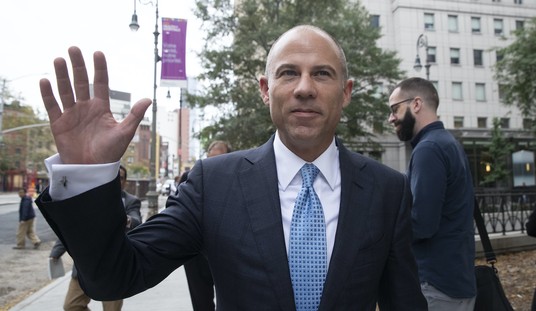Despite encouraging words from CMS and the administration on the numbers of young, healthy Americans vs. old, sicker Americans who have signed up for Obamacare policies, there is little cause for celebration by supporters of the law.
First, there is the “Obamacare number no one is talking about”:
When officials at the Department of Health and Human Services announced the most recent Obamacare enrollment figures earlier this week, they focused on one brag point amidst otherwise discouraging news about the program’s progress.
According to government tallies, 44.5 million people called or visited state and federal websites they said, presumably indicating broad interest in the new benefit.
But we also know that only 2.2 million people have signed up for Obamacare. Factoring in all of the professed web traffic, this would mean that the number of people who signed up (but didn’t necessarily pay) for an Obamacare health plan amounts to a conversion rate of less than 5% of the Obamacare web traffic.
And this is among consumers who had the patience to navigate the faulty Obamacare web portals.
This data strongly suggests that eligible consumers, who take the time to kick the tires on Obamacare, don’t like the products that they’re finding in the exchanges. They’re browsing, but not buying.
In the lexicon of the Internet, “conversion rate” amounts to the number of successful actions on a website (e.g. an e-commerce purchase) divided by the traffic to the site. Obamacare’s rate of converting web traffic into customers would place the program on par with the click through rates enjoyed by Internet banner ads, and well below sales figures on other e-commerce sites.
Considering the fact that most of the people who visited the exchange portals weren’t mere curiosity seekers (but are actually shopping for health insurance coverage) you get a sense how dismal these figures are.
The data suggest that the discrepancy between healthy and sick customers will continue, as those who have little or no need for insurance take a pass on Obamacare.
Not surprisingly, the problem is that the policies “were designed in Washington to suit political prerogatives rather than being designed in the marketplace to meet the demands of consumers.”
They’re laden down with costly mandates that leave the products too expensive. The plans try and make up for these costs by using narrow networks of cheap doctors and closed drug formularies. Despite the skinny networks, the plans still leave consumers with big premiums and deductibles. Washington managed to simultaneously degrade the coverage, and make it more expensive.
The bottom line: Insurance companies, already terrified at the “adverse selection” of consumers, may face huge losses in the marketplace.
How big? No one will know until July 2015, when the companies are supposed to report the numbers. But it’s important to note that the bailout program contained in Obamacare was really designed to help one or a couple of companies who ended up with an “adverse selection” problem so bad that they lost a lot of money.
From a Washington Examiner editorial:
It’s worth keeping in mind, however, that the risk corridors program was intended to help any given insurer that was stuck with a disproportionate percentage of individuals with high medical claims. It wasn’t meant for a scenario in which there are massive industrywide losses.
In such a case, the taxpayer exposure could be huge. Under the program, if an insurer’s losses are 103 percent to 108 percent over the target amount, the federal government would absorb half of those losses — and for losses that exceed 108 percent, the government would cover 80 percent.
Seeing the potential danger of this program, Sen. Marco Rubio, R-Fla., in November introduced legislation to repeal it before it puts taxpayers on the hook. Rep. Tim Griffin, R-Ark., proposed companion legislation in the House. Industry lobbyists are already gearing up for a fight. Buzzfeed obtained talking points from Blue Cross Blue Shield Association CEO Scott Serota sent to the company’s members, warning that repealing the program “jeopardizes the entire private health insurance market and will ultimately lead to a single-payer system.”
But Republicans shouldn’t be cowed by such transparently self-serving industry scare tactics. Pursuing repeal is a win-win for conservatives and for the country.
You can bet those “target amounts” are very generous and would cause the risk corridor feature to kick in with minimal losses by the companies.
There are dozens of insurance companies participating in state exchanges. Assuming most, if not all, lose money, the bailout could be billions of dollars. Halting a bailout before it gets started may force most companies to abandon the Obamacare exchanges because they will be unable to jack up next year’s premiums high enough to avoid losing even more money.
There is probably a threshold under which the number of companies participating would make the entire program collapse. What if some states had no companies offering plans at all? That’s a scenario that would stop Obamacare in its tracks and force massive revisions, if not a de facto repeal.
There has been talk of including an anti-bailout provision with the debt ceiling bill. This is an excellent idea in that at the very least, it would force Democrats and the president to defend bailing out billion dollar companies due to their own incompetence. In truth, Democrats probably won’t even consider the change. And any actual bailout won’t occur until next year, after the midterms.
But it will be worth it just to watch the Democrats squirm as they simultaneously take the GOP to task for favoring “inequality” and the rich, while defending large corporations who will receive a massive bailout courtesy of the U.S. taxpayer.









Join the conversation as a VIP Member